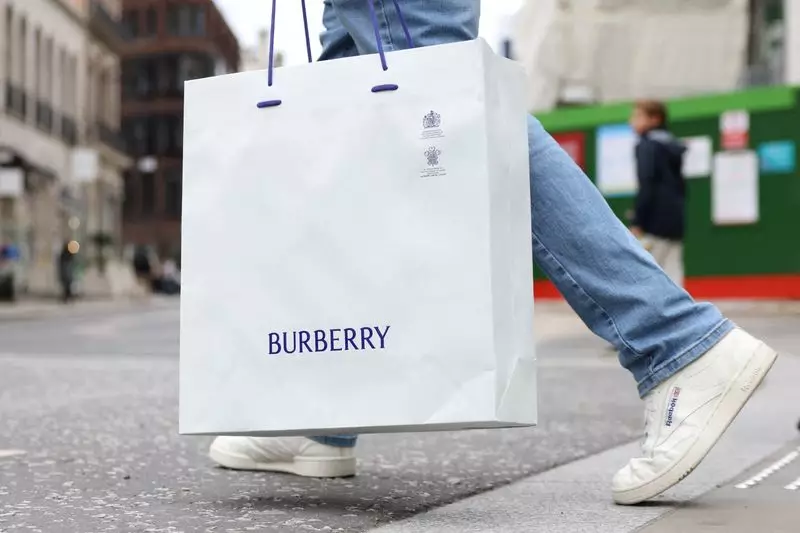In a period marked by uncertainty and fluctuating consumer behavior, Burberry has managed to showcase resilience in its latest quarterly results. The British luxury brand reported a more moderate drop in comparable store sales than anticipated, with a decrease of just 4%. This performance is significant, indicating potential resurgence in consumer confidence, particularly in the United States. Such a development is especially critical as Burberry has been navigating a challenging landscape to revitalize its brand image and sales figures.
Following the announcement of its quarterly results, Burberry’s stock surged by 12%, signaling a wave of optimism among investors. The response reflects a renewed belief in the luxury market’s ability to recover. Notably, shares of other luxury conglomerates such as Kering and LVMH also saw an uptick, with increases of 8% and 3% respectively. This collective positive movement suggests that investors might be beginning to view the luxury sector’s recent struggles as transient, maintaining faith in its long-term prospects. Burberry’s performance seems to resonate with the broader context of improving conditions across the luxury retail landscape.
Under the helm of CEO Joshua Schulman, who has been with the brand for six months, Burberry is undergoing a strategic pivot towards its iconic products. Schulman emphasized the brand’s classic trench coats and cashmere scarves in recent advertising campaigns, steering away from a focus on items that have not resonated as much with consumers. This return to Burberry’s roots aims to recapture the loyalty of customers who felt distanced by previous high-price, less prestigious designs. Schulman’s approach has elicited a positive response, with a notable uptick in new customer acquisition in December—a first in well over two years.
Burberry’s product lines that historically define the brand have experienced a resurgence, serving as focal points in its recovery strategy. Seasonal offerings, particularly cashmere scarves and outerwear, have proven to be best sellers worldwide. The pricing strategy has also been noteworthy; for instance, high-end products such as a women’s trench coat retailing at an astonishing $13,900 have seen satisfactory demand in luxury-driven markets like the United States. This trend indicates a shift back to premium branding and reinforces Burberry’s iconic status within the luxury fashion arena.
The performance of Burberry’s sales has varied significantly across regions. The Americas reported a 4% increase, bolstered by the success of a refurbished store in New York showcasing high-end offerings. In contrast, the Asia Pacific region faced challenges, with sales declining by 9%, albeit a notable improvement from the previous quarter’s staggering 28% drop. The European, Middle Eastern, Indian, and African sectors also showcased an upward trend, with a decline of only 2% compared to a larger 10% drop earlier on. These regional variances underscore the complexity and diversity of the luxury market, hinting at emerging opportunities for recovery even in traditionally challenging areas.
With a glimmer of hope for an eventual turnaround, Burberry expressed increased confidence in achieving profitability by the end of the financial year. The company is on track to offset a previous operating loss with encouraging retail revenue. As Burberry gears up to showcase its Autumn/Winter 2025 collection at London Fashion Week, all eyes will be on how the brand continues to navigate the complexities of the luxury market. As signs of stabilization in markets like China, which constitutes a significant portion of Burberry’s revenue, become more pronounced, the narrative surrounding the brand’s future looks not only promising but also compellingly strategic.
Overall, Burberry’s latest quarterly results symbolize not just a momentary success but a critical step towards reinforcing the luxury brand’s identity and consumer appeal. The strategic shifts implemented by Schulman, combined with encouraging sales trends, indicate that Burberry is on track to reclaim its status in an evolving market. As the brand capitalizes on its traditional strengths while adapting to modern consumer preferences, there is hope that it will not only recover but potentially thrive in the competitive world of luxury fashion.

